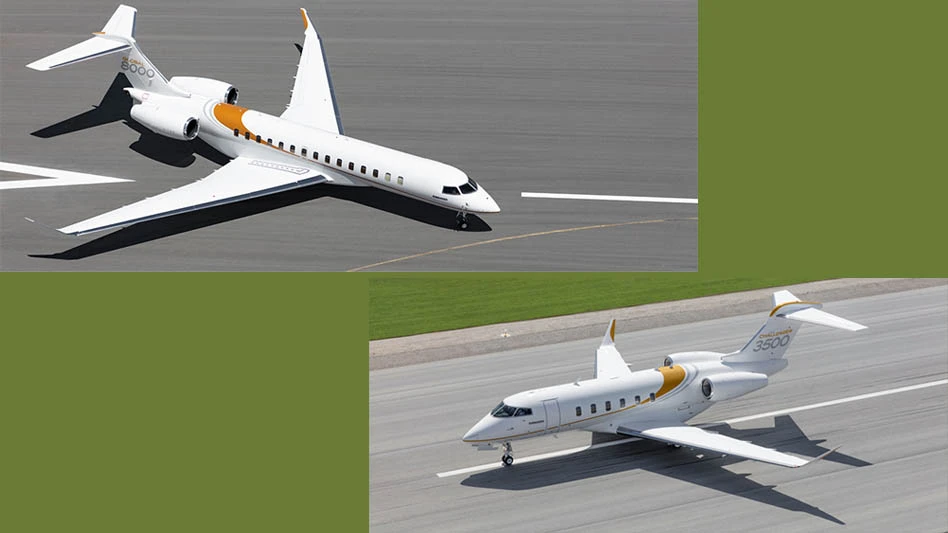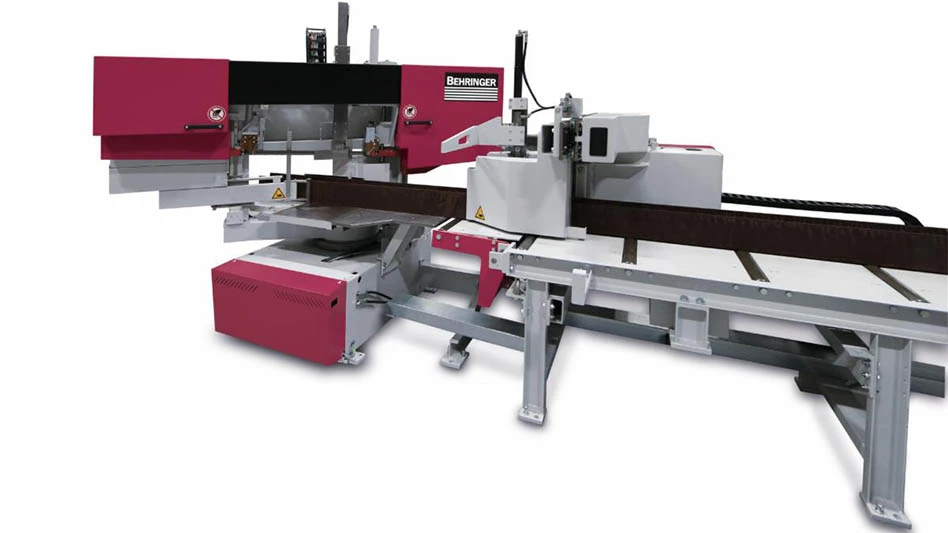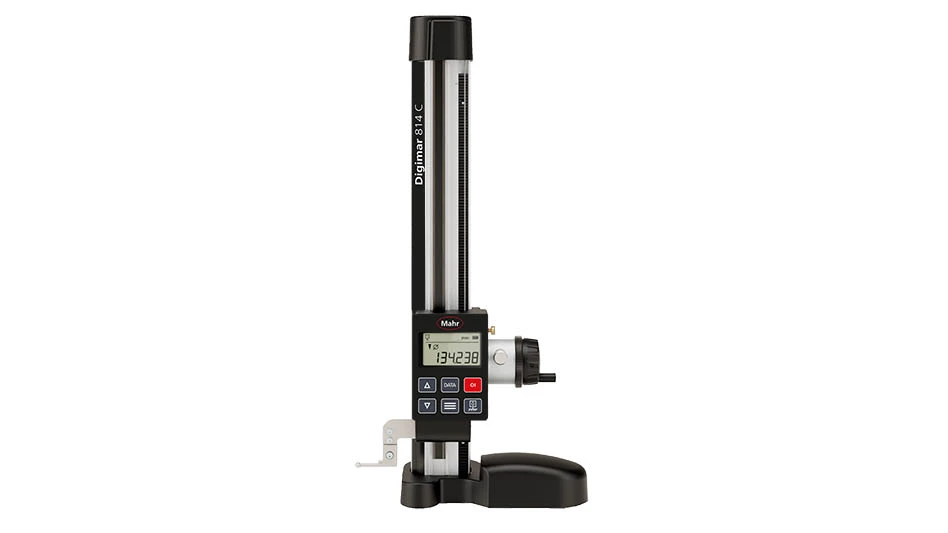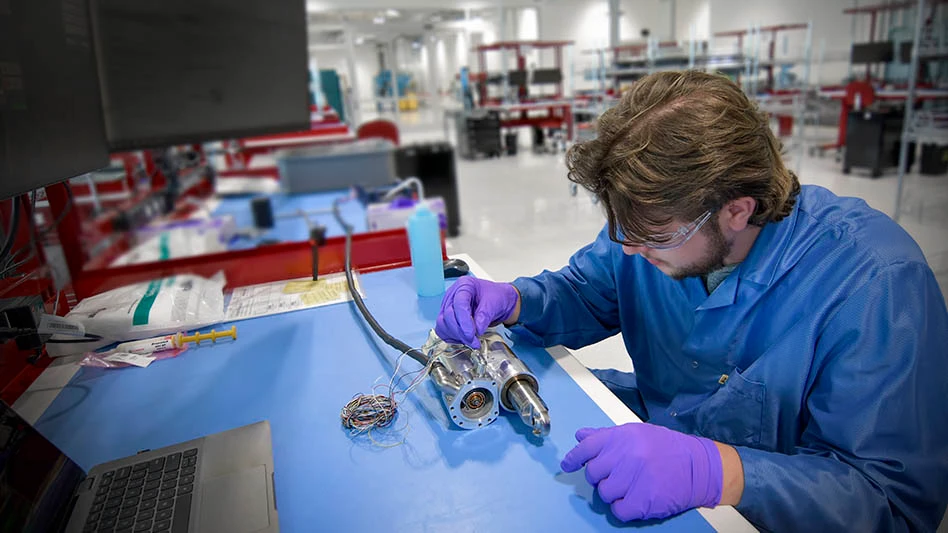 Hole quality, tool life, and tool cost all significantly impact overall productivity in composite machining.Successfully machining composites requires that aerospace manufacturers identify and apply tools and methods suited to each specific application. As the breadth of composites on the market continues to increase, manufacturers must deal with greater variation in machinability. To meet this challenge, cutting tool manufacturers continuously introduce new innovations dedicated to these demanding applications.
Hole quality, tool life, and tool cost all significantly impact overall productivity in composite machining.Successfully machining composites requires that aerospace manufacturers identify and apply tools and methods suited to each specific application. As the breadth of composites on the market continues to increase, manufacturers must deal with greater variation in machinability. To meet this challenge, cutting tool manufacturers continuously introduce new innovations dedicated to these demanding applications.
Nature of Composites
Machining composite materials presents an entirely new set of hurdles when compared to conventional machining of metals. In fact, working with one specific composite can often differ significantly from working with another. Manufacturers producing parts from composites must constantly reassess tools, methods, set-ups, and, in some cases, even machine tools and fixturing. When a new composite comes to the production floor, a shop pursuing process optimization must be willing to seek out the tools that offer the best approach to machining.
Generally speaking, a composite combines two materials with individual characteristics to create something with new and unique properties. At its most basic level, this concept dates back at least several centuries to forging irons of different properties into material with a specific, sought-after property. Modern composites are artificially manufactured materials composed of a matrix with dispersed phases. For instance, whiskers provide added strength and stiffness in silicon nitride ceramics, which are used for composite tools. The composite-filling material in machine tool bases provides another prominent example, where dampening characteristics are achieved by using granite in a resin.
Today, structural materials for aerospace, automotive, wind-power, and other applications drive innovation in composites. For aerospace, in particular, materials are developed to add stiffness, strength, and durability to structures in airframes. Composites offer an excellent strength-to-weight ratio and can be formed into complicated shapes, making them ideal for such applications. Compared to aluminum, CFRPs (Carbon Fiber Reinforced Plastics) offer more than 14 times the tensile strength and five times greater stiffness, at half the weight with approximately 6% as much thermal expansion. The difficulty of machining CFRPs provides some counter balance to these benefits.
Fibers, whiskers, particles, or woven material are dispersed in a matrix to add stiffness and strength in modern composites. Laminar composites include stacked sheets cemented together in such a way that the strength orientation varies with successive layers. Organic material, metal, and ceramic make up the main matrix materials, while the reinforcement may be continuous or discontinuous material of carbon or an inorganic material. Some of the most common materials currently used in airframes include carbon fiber, aramid fiber, and carbon-aramid fiber reinforced-plastic composites. The fibers in these are bonded in the matrix material such as an epoxy resin, but are also metallic.
CFRPs present the most rapidly developing field of composite materials and an increasing percentage of these are being subjected to machining applications. The plastic matrix reinforced with carbon fiber is most common, and may also be stacked with metals such as titanium or aluminum for some applications. In addition to offering excellent strength-to-weight ratios, these materials provide resistance to corrosion and fatigue. This enables excellent benefits for the airline industry as it reduces maintenance in addition to lowering fuel consumption.
Modern Composites
Whereas cutting tools achieve a sheering effect when cutting metal, they tend to break off material when applied to composites, which can fracture reinforcement fibers within the material. In general, sharp cutting edges and sufficient clearance become more important when working with composites, in order to minimize the tool rubbing against the material. Tool wear can be especially problematic, as geometrical changes to the cutting edge often lead to excessive heat generation, edge breakdown, and problems with component quality. Temperature of the cutting zone must be given extra consideration when working with CFRPs. The inability to transfer heat to chips makes the process of cutting CFRP much more vulnerable to temperature issues.
When machining flat surfaces, operators must deal with demands that call for innovative indexable insert tooling. Facemills and endmills equipped with diamond-tipped or diamond-coated inserts often prove most effective with composites featuring high fiber content. For edging and trimming, a variety of solid carbide cutters, and carbide and diamond inserts, offer alternatives for achieving high levels of quality. In general, the cutting tools need to be easy-cutting, generating minimal cutting forces.
Diamond-tipped (PCD) drills and milling cutters tend to maximize tool life, as diamond stands up relatively well to the wear of various carbon fiber materials and stacked materials, including those that contain titanium. Diamond-coated solid carbide tools can provide a suitable alternative for edging, though typically at the cost of shorter tool life.
Drilling is the most common machining operation when working with composites. It presents a unique challenge, as material at the entry and exit points can splinter and even split into separate layers, which is known as delamination. Achieving suitable surface quality often necessitates extra effort in obtaining satisfactory cutting action between fiber layers and the matrix. Cutting speeds of 100mpm to 200mpm are common, typically paired with feedrates of 0.02mm/rev to 0.06mm/rev. Most composite drilling applications feature holes ranging from 3.0mm to 12.7mm.
For drilling fiber-rich CFRP materials, operators should look to geometries that reduce splintering. Drills using vein design, or sintered PCD cutting edges, can use a double-facet geometry to minimize the chances of delamination upon entry and exit. Resin-rich CFRP materials often demand a steeper helix angle to reduce the risks of delamination and splintering. For these types of composites, one should start with a spindle speed of approximately 2,000rpm for a small or medium tool, with a low feedrate. This allows the observation of machining properties that is necessary to correctly adjust cutting data and evaluate the effectiveness of a specific tool geometry or grade.
Further increasing the challenges facing aerospace manufacturers, stacked materials that layer composites and metals are becoming much more commonplace and place additional demands on tool performance. Cutting data must be adjusted to accommodate a drill’s passing from one material into another, to avoid metal chips damaging the composite material.
Various tool geometries are available to address the varied nature of composite materials. While material removal rates are important, manufacturers should not rely solely on them for selecting a tool. Hole quality, tool life, and tool cost all significantly impact overall productivity in composite machining. The finish achieved in an operation can reduce or completely eliminate some secondary operations and maximizing tool life, which minimizes machine downtime.
Perhaps the best advice to an aerospace manufacturer working with composite materials is to partner with one or more cutting tool providers to optimize processes. They will be fully informed of the latest developments in the field and can bring a tremendous amount of expertise to bear on challenges with specific applications.
Sandvik Coromant
Fair Lawn, NJ
sandvik.coromant.com/us
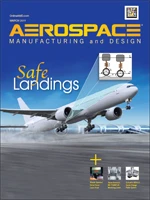
Explore the March April 2011 Issue
Check out more from this issue and find your next story to read.
Latest from Aerospace Manufacturing and Design
- Malaysia Aviation Group orders 20 more Airbus A330neo widebodies
- More displacement from space-tested piezo actuators
- Textron Aviation to bring its largest-ever lineup to 2025 EAA AirVenture
- Qualified materials for 3D-printing mission-critical applications
- #69 Manufacturing Matters - Shopfloor Connectivity Roundtable with Renishaw and SMW Autoblok
- Demystifying Controlled Unclassified Information (CUI)
- Simplify your shop floor operations while ensuring quality parts
- Happy Independence Day - July 4th
